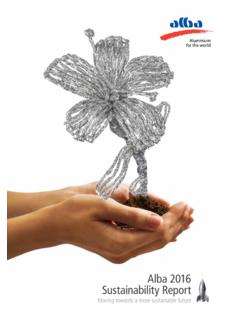Transcription of PROCESS FLOW – SECONDARY SMELTING
1 LEAD smelter Recycling has become an extremely important consideration in modern business not only from the recovery of valuable materials but also from an ecological and environmental protection aspect. Global trends by motor companies have lead to the development of recyclable motor vehicles. This trend is to design for disassembly . The goal is to close the production loop to conceive, develop and build a product with a long-term view of how its components can be refurbished and reused or disposed of safely.
2 This situation gives use to the need and concept of recycling. Scrap batteries are processed to the point where the polypropylene components are returned for cleaning, granulating and eventual re-processing. The scrap lead plates, terminals and separators are stockpiled for refining. All electrolyte is neutralised before being processed in our effluent plant. The flocculants are disposed of in cake form and dumped in a Class 1 dump whilst the clean water is disposed of into the municipal waste system. Some of the major benefits of having ones own smelter include: active contribution to positive ecological benefits more control over quality continuity of supply relatively high recovery rate of lead from scrap able to re- PROCESS dross and filtered materials.
3 All these factors are well and good but the lead industry more than any other has been subject to adverse publicity regarding environmental problems and legislative pressures to solve them. Anti-pollution controls have been implemented sometimes at very high cost. Several sets of legislation are in force including the OHSAct, NEM:Air Quality Act, NEM:Waste Act, National Water Act, Hazardous Substances Act, and as the manufacture of batteries involves lead we are required to be registered in terms of the manufacturing PROCESS and hold all the necessary permits.
4 Our investment in a smelter has therefore blended well with our commitment to the recycling of batteries. This is only a part of our long-term capital expansion programme which, to date, has seen an improvement in production control product quality and increased production capabilities. Further investments are planned for the next few years which will enable us to position ourselves to take advantage of the growth in the South African economy. PROCESS FLOW SECONDARY SMELTING SCRAP BATTERIES ELECTROLYTE POLYPROPYLENE NEUTRALISED GRANULATE METALLICS CLEAN RE-USE REDUCTANT AND FLUX DISCARD SLAG FINE DUST ALLOY BULLION DROSS (BASE METAL ADDITION FOR ALLOY SPEC)
5 CAST INGOTS SCRAP BREAKING smelter MELTDOWN AND BLENDING










